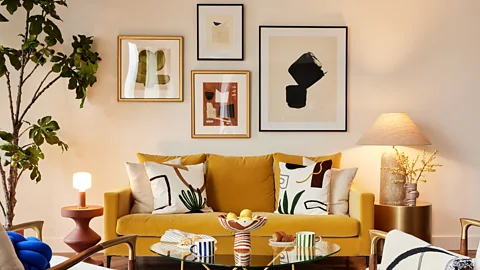 Artfully Walls
Artfully Walls“It’s about what speaks to you”: Displaying paintings, prints, textiles and sculptures can all help create a fresh living space for the new year – here’s how, according to the experts.
January is a popular time of year to refresh priorities – and perhaps our surroundings too, creating a new mood for a new year. New artworks can transform a living space, and also inspire future interests, intentions, or the desire for fresh goals. Even repositioning our existing paintings, prints and photographs can revitalise a home and feel like a new start.
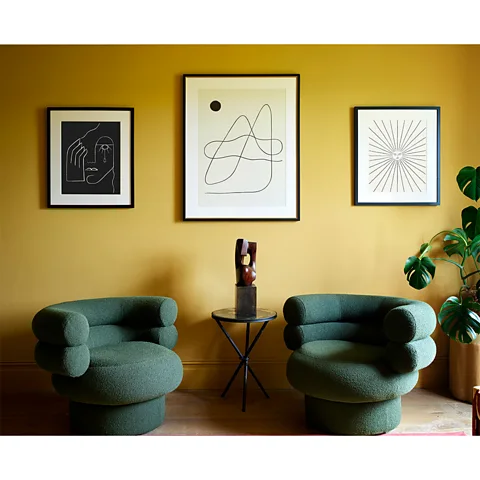 Artfully Walls
Artfully WallsImaginatively chosen and displayed art can both revive cherished memories and prompt feelings of wellbeing – and it can change the whole ambience of a space. Abstract art, for instance, evokes moods in a non-literal, suggestive way – a large painting or print dominated by loose, expressionistic mark-making can give a home a romantic, free-spirited feel, while a more hard-edged, graphic style gives a space a modern, urban feel.
Acquiring and displaying art isn’t the preserve of homeowners, either; in fact, it’s a great way to make a rental home feel more personal, without having to redecorate – and your pictures can move on when you do. It’s this flexibility that makes art such a useful element of home décor – artworks can be arranged, then reconfigured to change the character of a room. “A piece doesn’t have to be in one location forever,” says Katherine Kittoe, founder of Kittoe Contemporary, an online and physical art gallery and art consultancy that promotes emerging and established artists. “A re-hang of artworks every few years – similar in principle to re-hangs in large public galleries, though obviously on a more modest scale
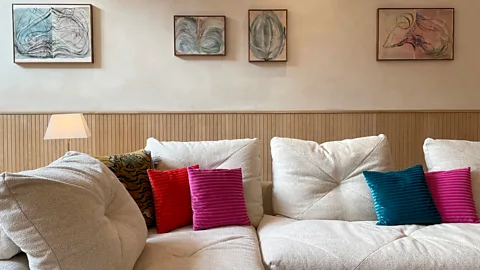 Adam Art Advisory
Adam Art AdvisoryThis, though, raises the practical but important question of how to repair walls dented by holes left after hanging. “Small nails are your best friend – they’re easy to patch up with spackling paste when it’s time to move out,” says Cathy Glazer, founder of Artfully Walls, a curated site for art-buyers in the UK and US. “Lightweight pieces can be hung with thin nails and hooks from a basic picture-hanging kit. Most standard picture-hangers hold up to 30lbs. It’s easier still to lean art on ledges or on stacks of books, mantelpieces or consoles for a very casual look.”
Of course, when art is added to a home, it must coexist with furniture and homeware accumulated over time. Yet it needn’t vie for attention with existing elements or get visually lost among them – it can be artfully displayed adjacent to homeware with similar qualities, for example echoing the bold, colourful pattern in a rug or the sensual curves of ceramics. And it can be shown with ephemera – from postcards to family snaps – to create aesthetically pleasing juxtapositions.
Wall-hung art can counterbalance the bulky, imposing look of furniture that occupies a permanent spot, such as sofas, according to Sophie Goldhill, co-founder of Liddicoat & Goldhill and its interior design arm, Hector Interiors: “A striking painting can serve as a visual focal point paired with sofas and tables, and can offset the weight of larger pieces that could otherwise dominate a space,” she tells the BBC.
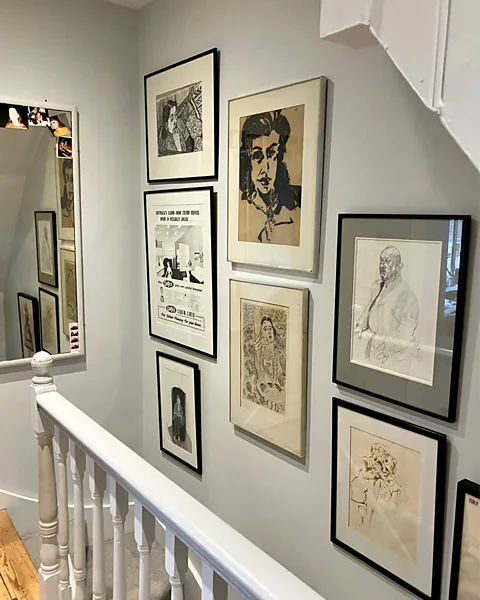 Selina Snow
Selina SnowAnd introducing a new artwork into a room can make the space more cohesive, Goldhill adds. “Art offers an opportunity to link different design elements, such as contrasting materials or colours, in a space, ensuring it doesn’t feel disjointed. A thoughtfully chosen piece of art can reflect or complement tones in fabrics or wood, tying the room’s design together.”
Opting for usable art can make buying and displaying artworks fun and accessible. A set of coasters and placemats – created with images by UK photographer Martin Parr and sold by art platform Plinth – is a good example. The aptly food-themed creations feature kitsch, close-up photos of cocktails filled with maraschino cherries, ice cream or tea in traditional cups and saucers.
Art of living
Food is also a major theme in the work of UK artist Selina Snow, whose joyful pieces depict mouth-watering delicacies from around the world – from colourful sushi to the humble full English breakfast. Snow has built up an eclectic collection of art and personal memorabilia that includes paintings and prints by her late father, Peter Snow, an artist and theatre designer, and myriad posters, textiles, objects and artefacts acquired on her travels. These are displayed in her brightly painted home in the New Forest, Hampshire, alongside her own artworks.
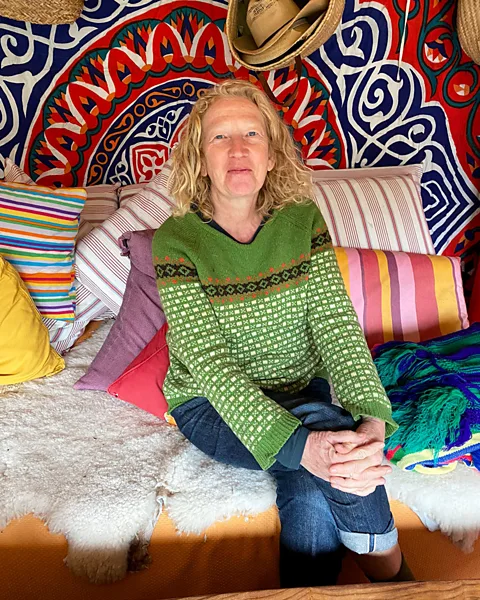 Selina Snow
Selina SnowThe buttercup yellow fireplace in Snow’s living room has informed the choice of objects displayed on the mantelpiece and the art on the wall above it. A Balinese theatre mask representing a devil’s head and a bust by artist Corin Johnson reminiscent of Marlene Dietrich, both of a similar height, stand at either end of the mantelpiece. Above it hangs an abstract painting featuring a pattern of yellow spots that echo the colour of the fireplace. “I like the way the bust and mask balance each other and frame the painting,” Snow tells the BBC.
But Snow doesn’t see her combinations of objects as simply toning chromatically. “I don’t want pieces to blend together so they lose their individual character, but so they enhance each other. I like to link colours but not obviously. I’ve got a sculpture of a violinist standing on a sulphur yellow table that picks up on a black pattern detail in a painting above it.”
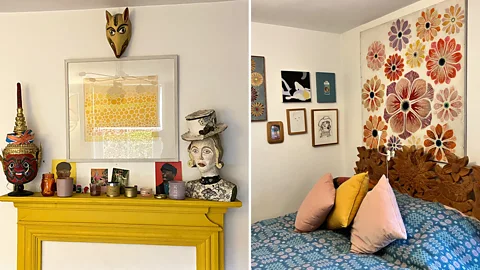 Selina Snow
Selina SnowShe also pairs very different pieces that nevertheless share the same motifs. In Snow’s bedroom is a wooden headboard carved with flower shapes by her late husband, sculptor Richard Austin; above it is a painting of flowers.
Snow puts postcard-sized reproductions of paintings in inexpensive frames to elevate them and make them stand out. But for original artworks, she recommends investing in a professional framing service in order to preserve them well.
Roberto Eckholm, a London-based artist, curator and art advisor, who has mounted art shows in his own home, raises a similar point: “Be careful how you look after the medium. Don’t let direct sunlight fall on framed paintings. You might have to install a UV protective window film over glass in brighter spots.”
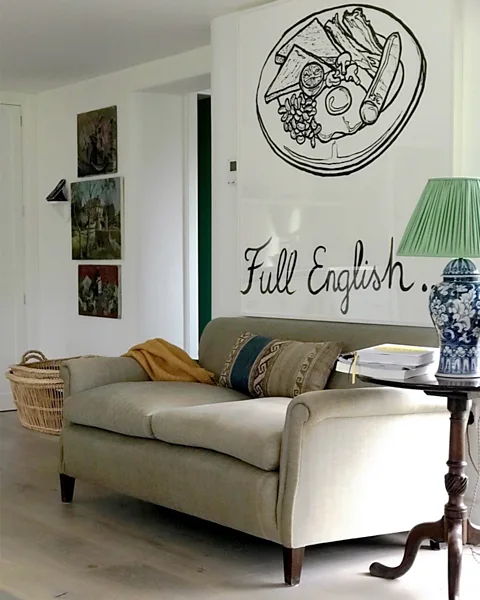 Selina Snow
Selina SnowEckholm also points out that while sculpture might be associated by many with monumental works in galleries, it has a place in the home, too. “It can be limiting using only tables, plinths or floor space to display sculptures,” he says. “At home, I like to arrange mine on affordable free-floating shelves at different heights and in various sizes, which creates an interesting domestic display.”
While Snow and Eckholm have art collections that grew organically, aided by long-standing art-world connections, many people establish theirs from scratch. So what criteria should apply when you’re acquiring your first original artworks? “Visit art exhibitions and auctions to explore what kind of art resonates with you,” advises Kittoe. She cites the London Art Fair (on later this month), Affordable Art Fair and British Art Fair as good places in the UK to source art, as well as art trails and open-studio events.
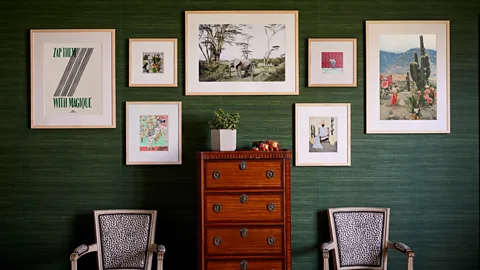 Artfully Walls
Artfully WallsKittoe also suggests making use of a “try before you buy” service: “Many galleries allow you to see works in your own space before committing to the purchase. This can be useful as homes are so different to a brightly lit gallery, and this arrangement allows you to see the works at different times of the day and try them in different parts of the house. When hanging several pictures together, play with potential configurations by laying them out on the floor before committing them to fixed spots on the wall.”
In the end, go with what feels right for you. As Cathy Glazer puts it: “Whether it’s travel posters, collages or fleamarket finds, your collection should reflect what speaks to you. But if you’re unsure where to begin, it can help to adhere to a theme, for example a grouping of botanicals, portraits or black-and-white photography. Choosing art can feel intimidating but it’s not about right or wrong, it’s about what speaks to you.”









Recent Comments